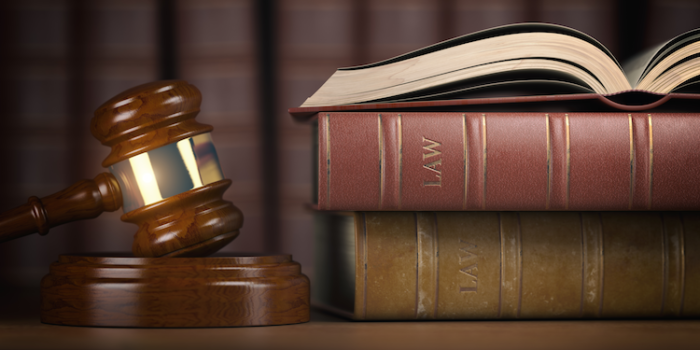
In State v. Quintin D. Watson (A-23-22/087251) (Decided August 2, 2023), the Supreme Court of New Jersey held that first-time in-court identifications may only be conducted when there is good reason for them. In addition, before attempting to conduct a first-time in-court identification, the State must give fair notice to the defense. The New Jersey Supreme Court also placed limitations on narration evidence, holding that that the rules of evidence do not allow for continuous, running commentary on video evidence by someone who has merely studied a recording.
Facts of State v. Watson
Defendant Quintin Watson was convicted of bank robbery based on evidence that included testimony from a teller, who identified defendant for the first time in court. The evidence also included testimony from the lead detective, who narrated a bank surveillance video for the jury.
In January 2017, an individual wearing a baseball cap and gloves robbed a bank in North Brunswick. Bank surveillance footage captured the entire 57-second robbery. In November 2017, defendant was charged in three other robberies after his former girlfriend, “Joan,” identified him in a wanted photo from one of those robberies. After the office investigating the other robberies notified the North Brunswick Police Department about defendant, he became a suspect in the North Brunswick robbery as well. In September 2018, a detective showed the teller six photos, one at a time, and asked if he could identify the person who robbed the bank. The teller picked a photo of someone other than defendant and said at trial that he was 75-90 percent sure of the identification.
At trial, the prosecutor asked the teller if he could identify the robber in court. The teller identified defendant, who was seated in between his lawyers at counsel table. The teller said he was “maybe like . . . 80 percent” sure. The prosecution did not provide advance notice of the in-court identification, and defense counsel did not object to it. During cross-examination, the teller revealed that he had met with the prosecutor prior to trial and that the prosecutor had “informed [him] that the individual who was accused of committing this robbery is in court seated at the defense table.” Joan also testified at trial. She was shown two still photos from the bank surveillance video and testified she was 100 percent positive that each depicted defendant.
Sergeant Frank Vitelli, Jr., testified about the investigation. Over objection, Sergeant Vitelli narrated the bank surveillance video. The prosecutor asked a series of questions while the video was played for the jury, ranging from general inquiries — “What do you see?” — to specific ones — “With what [did he open the door]?” The more open-ended questions invited and led to more open-ended narrative responses. Sergeant Vitelli also testified about how his department learned about defendant. He confirmed that he had been “contacted by another law enforcement agency regarding” defendant, and that he “consult[ed] with that law enforcement agency . . . after which criminal complaints were signed against” defendant.
NJ Supreme Court’s Decision in State v. Watson
The New Jersey Supreme Court reversed, holding that the identification alone was sufficient to overturn the conviction. With regard to the investigator’s testimony, the court further held that the rules of evidence do not allow for continuous, running commentary on video evidence by someone who has merely studied a recording.
The New Jersey Supreme Court first addressed first-time in-court identifications. It held that to avoid unduly suggestive identifications in court that can trigger serious due process concerns, first-time in-court identifications may only be conducted when there is good reason for them. In addition, before attempting to conduct a first-time in- court identification, the State must give fair notice to the defense.
“In the case of first-time in-court identifications, witnesses are asked if they can identify their culprit long after the crime took place. They see a single individual seated at the defense table beside a lawyer. And it is evident the prosecution team believes that person is the culprit,” Chief Justice Stuart Rabner wrote. “The inherently suggestive nature of the procedure, conducted in front of a jury, evades well-settled protections that the law provides. It therefore risks depriving defendants of their due process rights.”
Going forward, the New Jersey Supreme Court advised that certain practices be applied to proposed first-time in-court identifications: (1) The State must file a motion in limine if it intends to conduct a first-time in-court identification, and the parties and the court should explore at the hearing whether good reason exists; (2) Prosecutors must disclose in writing anything discussed with a witness during trial preparation that relates to an upcoming in-court identification; (3) if a hearing is needed to determine admissibility, it should be conducted and resolved before the start of trial.
The New Jersey next turned to the narration evidence. The court acknowledged that such evidence can be helpful by drawing attention to key details that a jury might otherwise overlook, particularly when a dealing with a potentially confusing, complex, or unclear recording. However, the court further found that the rules of evidence do not allow for continuous, running commentary on video evidence by someone who has merely studied a recording.
The New Jersey Supreme Court also identified certain safeguards to underscore the limited use of narration evidence, writing: “investigators should give focused responses to specific questions; they can provide objective, factual comments but not subjective interpretations; they may not comment on facts that are reasonably in dispute, which should be left for the jury to decide; and they should not offer testimony based on inferences drawn from other evidence.” The court further directed that a party that intends to present narration evidence should provide opposing counsel a written summary of the proposed testimony before trial. The parties can then ask the court to address any disputed areas at a Rule 104 hearing.
